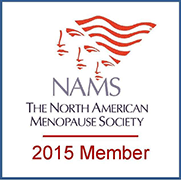Health Issues
“You won’t just find them on sailors and motorcyclists...”
Tattoos are becoming more and more common today and you won’t just find them on sailors and motorcyclists. Tattoos are a permanent mark or design in the skin by injecting ink into the top layer of skin through a needle. However, because a tattoo affects the dermis (inner layer) of your skin, it is important to take special considerations for the health and overall well being of yourself and your skin.
Infection
Since a needle punctures the skin, there are of course risks for infection. This would include symptoms such as redness, irrita- tion, inflammation, and possibly pus from the tattoo site.
Allergic Reaction
Another risk is an allergic reaction of the skin due to the ink; this can cause an itchy rash that sometimes may not be apparent until years after receiving the tattoo.
Blood Borne Illnesses
Another risk is blood borne diseases if the tattoo needle has not been properly sterilized between clients. These would include diseases such as hepatitis B, C, as well as HIV or tetanus.
Make sure to carefully decide whether or not you want a tattoo. Tattoos are permanent and sometimes removal does not always work well. Also, it is an investment which can be costly and one must also closely consider the possibility of regretting it one day. Another consideration to include is location. Is it somewhere that is concealable if possible or is it in a location that could potentially stretch with weight gain or pregnancy. Finally, never get a tattoo while under the influence of alcohol or drugs.
Here are some safety precaution tips:
•Who does the tattoo/what are their qualifications?
•Do they follow provincial requirements and licensing standards?
•Does the tattoo artist wear gloves?
•Does the tattoo artist use the proper equipment? This means all new equipment and ink from unopened packages.
•Does the tattoo artist sterilize the non disposable equipment?
Take care of your new tattoo:
•Remove the bandage after 24 hours. Apply an antibiotic ointment to the tattooed skin while it’s healing.
•Keep the tattooed skin clean. Use plain soap and water and a gentle touch. Pat, do not rub the area dry.
•Use moisturizer. Apply a mild moisturizer to the tattooed skin several times a day.
•Avoid sun exposure. Keep the tattooed area out of the sun for at least a few weeks.
•Choose clothing carefully. Do not wear anything that might stick to the tattoo.
•Allow up to 2 weeks for healing. Do not pick at any scabs. This increases the risk of infection and can damage the design and cause scarring.
If you think your tattoo might be infected or you are concerned that your tattoo is not healing properly, contact your doctor. If you are interested in tattoo removal, ask your dermatologist about laser surgery or other options for tattoo removal.
Reference: Mayo Clinic. (2012). Tattoos: Understand risks and precautions.
Retrieved from http://www.mayoclinic.com/health/tattoos-and-piercings/MC00020
Mayo Clinic Adult Health: http://www.mayoclinic.com/health/tattoos-and-piercings/MC00020
FDA U.S. Food and Drug Administration: http://www.fda.gov/forconsumers/consumerupdates/ucm048919.htm Discovery Health: http://health.howstuffworks.com/skin-care/beauty/skin-and-lifestyle/tattoo-safety.htm
Permanent Makeup:
A relatively new trend in tattooing called micropigmentation (permanent makeup or cosmetic tattooing) is the injection of permanent pigment into the skin’s dermal layer to enhance a facial feature such as the eyebrows, or to permanently apply makeup such as eyeliner or lip liner to the face. This procedure is permanent, just like a tattoo, therefore it is important to carefully consider this option and to seek a trained professional.
The American Society for Aesthetic Plastic Surgery. (2012). Micropigmentation.
American Society of Plastic Surgeons. (2012). Permanent Makeup. Retrieved from http://www.plasticsurgery.org/Cosmetic-Procedures/Permanent-Makeup.html
All About Facial Rejuvenation. (2013). Micropigmentation: Is Permanent Makeup Right For You? Retrieved from http://www.facialplasticsurgery.net/micropigmentation.htm
Tatoo Removal “Think before you ink...”
Tattoos are meant to be permanent and therefore, removal can be difficult. There are a few options available on the market for tattoo removal. Some include creams, dermabrasion, excision, or laser.
At-Home Creams: There are many at-home remedies such as Tattoo-off or Wrecking Balm Tattoo Removal and Fade System.
Dermabrasion: This is the use of a high-speed rotary abrasion device. Basically it is rubbing off the skin cells (kind of like sand paper) as a form of tattoo removal.
Excision: This is the surgical removal of a tattoo. This method removes a tattoo entirely, however, the patient will be left with a scar. Also, this method of tattoo removal is usually only appropriate for smaller tattoos, as it may not be possible with tattoos that cover a larger surface area.
Laser: Q-switched lasers are the common method of treatment. The lasers work best on those with dark tattoo ink such as black and light pigmented skin. The laser works by releasing a powerful pulse of energy that travels in the skin and uses heat to shatter the ink on the skin. The body then naturally absorbs and excretes the ink particles. You will likely need multiple treatments to completely dissolve the tattoo.
Reference: Mayo Clinic. (2012). Tattoo Removal. Retrieved from http://www.mayoclinic.com/health/tattoo-removal/MY01066/DSECTION=what%2Dyou%2Dcan%2Dexpect Resources:
About.com Tattoos/Body Piercings: http://tattoo.about.com/od/tatremoval/a/tatremoval.htm
Discovery Health: http://health.howstuffworks.com/skin-care/beauty/skin-and-lifestyle/tattoo-removal.htm
By: Lauren Dawes
Nursing Education Program of Saskatchewan Student
January, 2013
Improving Women's Lives Through Better Health in Mid-Life and Beyond


